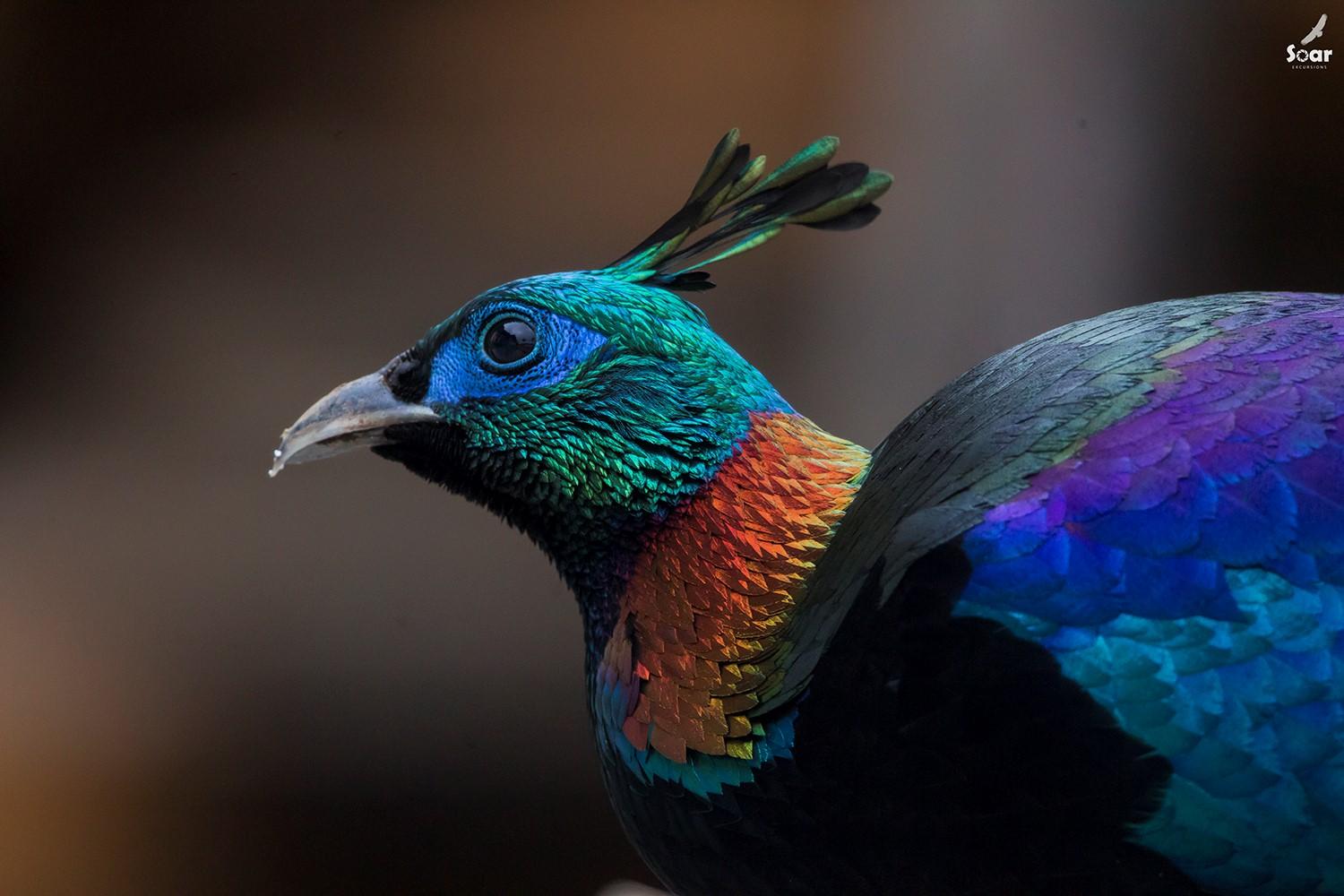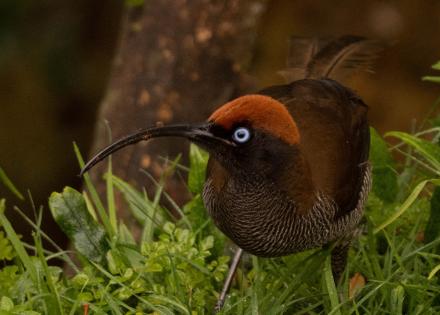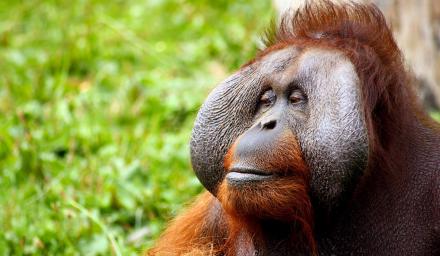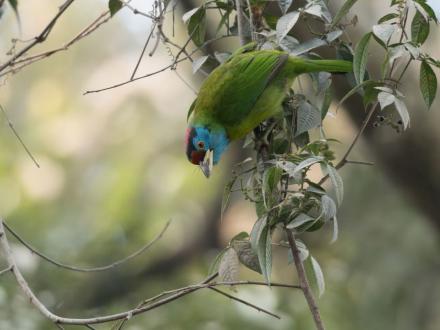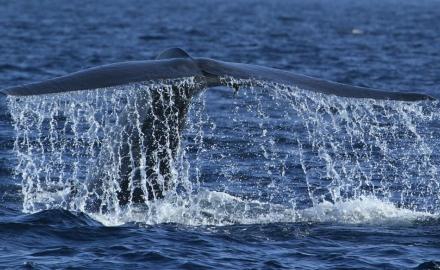Join us on an incredible birding and wildlife tour though India and discover fossil sites which demonstrate the Gondwanan connection of the continent.
On this tour we have the chance to see some globally-threatened species like Indian Vulture, White-rumped Vulture, Red-headed Vulture, Sociable Lapwing, Great Indian Bustard, Forest Owlet, Egyptian Vulture, Lesser Florican, White-naped Tit, Stoliczka’s Bushchat, Green Avadavat, Greater Spotted Eagle, Eastern Imperial Eagle, Great Knot, Marbled Duck, Indian Spotted Eagle, Dalmatian Pelican, Indian Skimmer, Lesser White-fronted Goose, Sarus Crane, Macqueen’s Bustard, Saker Falcon, Yellow-eyed Pigeon, Eurasian Curlew, Pallid Harrier, Laggar Falcon, Cinereous Vulture, Ferruginous Pochard, Darter, Painted Stork, Black-headed Ibis, Black-bellied Tern, Black-necked Grebe, Black-tailed Godwit, Eurasian Roller and Lesser Flamingo. Other notable birds found in Gujarat are Grey Hypocolius, Demoiselle and Common Cranes in their thousands, Greater Hoopoe Lark, Crab Plover, Eurasian Oystercatcher, Greater Flamingo, Great White Pelican and many varieties of waterfowl.
Gujarat is home to some unique mammals like Asiatic Wild Ass and Asiatic Lion which cannot be seen anywhere else in the world in their natural habitat. Beside these mammals, Gujarat has a large population of Blackbucks and Indian Gazelle. Striped Hyena, Desert and Indian Fox, Indian Grey Wolf, Honey Badger and Sloth bear are also possible.
The fossils found in Gujarat, especially those from Kutch and Saurashtra region, clearly establish that it was part of the Gondwana Supercontinent. Gondwana separated in the Jurassic period to become the landmasses that we now know as India, Africa, Australia, South America, Antarctica and New Zealand. The origin of the name ‘Gondwana’ was derived from the Gond tribe of Central India, hence the relevance to our Gondwanan-themed tours.
Accommodation in luxury boutique resorts/heritage hotels for each night of the tour, specialist guiding and transport in a private air-conditioned vehicle with specialist licensed local guide as outlined in the itinerary, all meals (B, L, D snacks and bottled water) and activities outlined in the itinerary such as safaris and excursions and National Park entry fees. Also includes additional expert speakers and guides.
Bhutan Extension
Accommodation for each night of the tour, specialist guiding and transport for day and night tours in a private air-conditioned vehicle with specialist licensed local guide as outlined in the itinerary, all meals (B, L, D snacks and bottled water), all entry fees to monuments, Museum and National Parks, all internal taxes and charges (including royalties) and Bhutan Visa Fee.
International and domestic airfares, alcoholic and non-alcoholic beverages and expenses of a personal nature (snacks, travel and medical insurance, internet, laundry, tips etc) and camera fees in parks and monuments.
Pre-tour arrangements: Accommodation can be booked for you in Ahmedabad with breakfast the following morning if required for an additional US$75 per person twin share and US$55 single supplement.
Kolkata flight and accommodation: For those people joining the Bhutan extension from the Gujarat tour, we will fly from Ahmedabad to Kolkata (staying at an Airport hotel at Kolkata overnight and then onto Paro, Bhutan the following morning). These airfares, dinner and overnight accommodation at Kolkata are not included in the price. The additional accommodation costs at Kolkata on 5 December 2020 with breakfast the following morning are US$75 per person twin share and US$55 single supplement.
Please note for both main tour and extension:
The above rates are based upon a group size of 6-8 people. If the tour does not achieve minimum numbers, a small supplement may be charged. We would always discuss this with you beforehand.
Meals and drinks: Breakfast generally consists of an American style breakfast, which includes eggs to order, various Indian items as well as cereal, toast, fruit, yoghurt and tea/coffee. Lunch will generally be buffet style with vegetarian and non-vegetarian options. Each lunch will have a salad, main course and dessert. Dinner usually consists of a soup starter, main course and dessert. Drinks (soft and alcoholic) are generally not included but at lunches and breakfasts juice may be made available.
The itinerary: Whilst we aim to follow the itinerary as planned, please note that the itinerary provided should only be used as a guideline. Depending on individual trip circumstances, weather, and local information, the exact itinerary may not be strictly adhered to. The guides reserve the right to make changes to the itinerary as they see fit.
Download the itinerary brochure for the Western India Birds and Wildlife tour.
Download (pdf 867.62 KB)There are terms and conditions relating to payments, cancellations, refunds, insurance and responsibility for our tours.
Here's what you'll see and do on the Western India Birds and Wildlife tour.
Today we arrive at Ahmedabad where we will meet tour local guide. After checking into our hotel and relaxing after a long flight, we will have an introduction to the program and orientation of the landscape, bird and mammal watching and geology of Gujarat. In the evening, we will have a small welcome ceremony in evening and a walk around the neighbourhood.
Accommodation: Ahmedabad
Meals included: L D
After an early breakfast, we will visit the Balasinor Dinosaur Park. The site is home to one of the largest dinosaur hatcheries in the world. Eggs, bones and skeletons of about 13 species of dinosaurs which lived here in the Jurassic and later Triassic age can be seen. After lunch we will bird in nearby wetlands and the Gulf of Khambhat.
Accommodation: Ahmedabad
Meals included: B L D
This morning, we depart for the Aravalli hills (drive time 4 hours) which are one of the oldest mountain ranges in the world, dating to the Precambrian era. The region is rich in Wildlife, including Leopard, Striped Hyena, Palm Civet. We Will check into our hotel for lunch and then take a wildlife safari in the valley.
Accommodation: Aravalli Hills
Meals included: B L D
After breakfast this morning, we will take a walk in the nearby jungle to see the rock paintings made by the first settlers. The tribal communities here, share their heritage and customs with the Gondi tribe that inhabit the forests of central India. Walk to their rock paintings and visit their temple to learn about their belief systems, customs and totem horses. The rock formations and forests of the Aravalli hills belong to the early Gondwanan period. Observing the geology of that region gives us an idea of the ancient forests that once spanned through the entire Supercontinent. After lunch we will check out of our hotel and depart for Little Rann of Kutch. En route, we will visit the stepwell of Patan, an 11th Century Solanki architecture monument with exquisite architecture and carvings unparalleled to any other wells. This unique monument is a UNESCO World Heritage site and served the city of Patan. Check in, dinner and rest.
Accommodation: Patan
Meals included: B L D
Today we will take an early morning and evening wildlife safari in the Little Rann of Kutch to experience yet another kind of landscape. The sanctuary is home to the endangered Asiatic Wild Ass (Onager) which is found nowhere else in the world. In addition, the sanctuary is home to many migratory birds like flamingos, pelicans, cranes, etc. Visit the saltpans and interact with the workers to learn about their lives, the tradition of salt-making and its contribution to the annual salt production in the country.
Accommodation: Little Rann of Kutch
Meals included: B L D
This day will be fully devoted to serious birding. This area is home to more than 350 migratory Bird species, including a great variety of raptors, waterfowl, flamingos, cranes, bustards, owls and other desert species.
Accommodation: Little Rann of Kutch
Meals included: B L D
This morning we depart early for Dholavira (6-hour drive), one of the largest Indus valley civilization sites. After checking into our accommodation, we will visit a Fossil Park which contains plant fossils and geological formations from the Jurassic age. Enjoy the beautiful sunset in the White Salt Desert which is located at the edge of the fossil park.
Accommodation: Dholavira
Meals included: B L D
After breakfast today, we will visit the Indus valley site and explore the ancient city with the efficient systems developed for conservation, harvesting and storage of water by the Harappans. Stamp seals, red ware pottery with motifs, perforated jars, copper celts and bangles, shell bangles and steatite beads are a few of the notable artefacts found in Dholavira. Post lunch; depart for Bhuj (4 hours’ drive), arriving by evening.
Accommodation: Bhuj
Meals included: B L D
Today we will spend the whole day birding in the Banni Grasslands, one of the largest grasslands in Asia. It is home to over 350 species of birds during winter and known for its congregation of thousands of migratory cranes.
Accommodation: Bhuj
Meals included: B L D
Today we will visit the site where the first Ichthyosaur was found. This ancient Jurassic marine mammal is a very important discovery, linking the Indian subcontinent with Gondwanan Paleobiogeography (we also see fossil Ichthyosaurs of the same age on our tours in Outback Queensland, Australia). Meet one of the excavators and learn about the process of discovery and excavation methods. We will then visit a museum with one of the largest collections of fossils from Western India.
Accommodation: Bhuj
Meals included: B L D
This morning, we depart for Velavadar National Park (7 hours’ drive). While this is mainly a day of Travel, we will stop to birdwatch en route and arrive by evening.
Accommodation: Velavadar
Meals included: B L D
This morning and this evening we will take a safari in The Blackbuck National Park. This is the best place in India to see Blackbucks (Indian Antelope). Other species found here include Indian Grey Wolf, Striped Hyena, Blue Bulls or Nilgai (the largest Asian antelope which is endemic to the Indian subcontinent), Jungle Cat, Golden Jackal and Indian Fox. Velavadar is the world’s largest harrier congregation site during November to February and one can see over 3,000 harriers at their evening roost. The harrier species found here include Montagu’s, Marsh and Pallid Harrier along with small numbers of Hen Harrier.
Accommodation: Velavadar
Meals included: B L D
This morning we will take an early morning Safari in the National Park, before departing for Ahmedabad after lunch. En route, we will visit the Thol Bird Sanctuary.
Accommodation: Ahmedabad
Meals included: B L D
After breakfast this morning, we will visit the iconic Sidi Saiyed Jali, a beautiful 16th Century monument and unofficial emblem of Ahmedabad. There will also be an opportunity to do some shopping and exploring around Ahmedabad before our onwards flights** with great memories.
Accommodation: none
Meals included: B L D
On our arrival at the Paro international airport, our local guide will meet us and present an offering of a Kha Dha (traditional scarf). We will then transfer to our hotel. Those participants who are travelling from the Gujarat Western India group tour will fly from Kolkata to Paro. The flight schedule for 6 December 2019 is 8:15-9:55 Bhutan Airlines Kolkata to Bhutan (non-stop). We will start our birding in the area by exploring the Paro River banks specifically looking for Ibisbill, Brown Dipper and Wallcreeper. We will also have good chance of seeing other commoner species such as River Lapwing, Olive-backed Pipit, White-capped and Plumbeous Water Redstart, White Wagtail, Rufous-breasted Accentor, Green and Common Sandpiper.
Accommodation: Paro
Meals: L D
This morning we take an early morning drive to Chele La (about 1hr drive to approx. 4000 metres above sea level). Today's targeted species will be Pheasants and other high-altitude birds. At the base of the pass you can expect to see Kalij Pheasants. Towards the mid-way point, we will be entering into the Satyr Tragopan's habitat and in the vicinity of the pass we will search for Blood Pheasant and Himalyan Monals within the vicinity of pass. Other species on the way and around the pass includes Spotted, Black-faced and Chestnut-crowned Laughingthrushes, Varieties of Tits, Collared and White-winged Grosbeak, Spotted Nutcracker, Green-tailed and Mrs Gould's Sunbirds, Red-headed Bullfinch, White- browed, Dark-rumped and Dark-breasted Rosefinch, Rufous-bellied Woodpecker, Hodgson's Treecreeper, Gold-billed Magpie, Fulvettas, Yuhinas and other alpine specialist species. After birding at the pass, we will head back towards capital city of Bhutan, Thimphu. Our final stop for the day will be next to Thimphu city, sewage pond area for Solitary Snipe and Black-tailed Crake as well as second chances of Ibisbill and Wallcreeper. Today we will also visit the “Bhudda Dordenma Statue”. The massive statue of Shakyamuni measures in a height 51.5 meters and is made of bronze and gilded in gold.
Accommodation: Thimphu
Meals: B L D
This morning we leave early to travel to Punakha, (2 hr 30 min drive), stopping en route at Dochula (about 3,150 metres above sea-level). Around the Dochula pass we will look for Fire-tailed Myzornis, Finches, Yuhinas, Eurasian Jay and other alpine birds. During our descent, we will explore the Royal Botanical Park. The park has an amazing broad leaf forest composition, providing good habitat for wildlife. Here if we are lucky, we may see the elusive Red Panda. In addition to the common birds, we will explore the nature trail inside the Park for Ward's Trogon, Brown and Black-throated Parrotbill, Golden-breasted Fulvetta, Slender-billed and Streaked-breasted Scimitar Babbler, Grey-sided Laughingthrush and many others. We then continue our drive to Punakha valley, searching en route for the rare Yellow- rumped Honeyguide, Scarlet and Long-tailed Minivet, Great and Golden-throated Barbet, Rusty-cheeked Scimitar Babbler, Verdicter Flycatcher and other resident species. We will also take an evening drive along the Po Chhu River to look for the critically-endangered White-bellied Heron and vulnerable Pallas's Fish Eagle. Other species found here include migratory water birds, vagrant Mandarin Duck, Ibisbill, Red-wattled Lapwing, Common and Crested Kingfisher and a few raptors.
Accommodation: Punakha
Meals: B L D
Today we will spend the whole day birding inside the Jigme Dorji National Park and along Mo chu River. We have the possibility of seeing Red–headed Trogon, Wallcreeper, Slaty-bellied Tesia, Small and Large Niltava, Black-chinned Yuhinas, Slaty-back Forktail, Pygmy, Rufous-throated and Spotted Wren-babblers, Woodpeckers, Laughingthrushes and with luck, White-tailed Eagle and Pallas’s Fish Eagle. We will also have a good glance of commoner species like Oriental Turtle Dove, Great Cormorant, Blue Whistling Thrush, Plumbeous Water Redstart, Rufous Sibia, Grey-headed Canary Flycatcher, Green-backed Tit, Brown Dipper, White-capped Water Redstart, White-throated Laughingthrush, Golden-throated Barbet, Great Barbet, Crested Kingfisher, Grey Treepie, Ashy Drongo, Verditer Flycatcher, Brown-throated Treecreeper, Black-throated Tit, Black Bulbul, Red- vented Bulbul, River Lapwing, Grey Wagtail, Gadwall, and Large-billed Crow. This evening, we will also visit Punakha’s Punthang Dechen Phodrang (the name means “place of Great bliss”), which stands on the tongue of land where two rivers, the Phochu and the Mochu meet. Punakha dzong has special significance in Bhutan history. Punakha Dzong was place where Bhutan’s first King was crowned in 1907. It is winter residence for Je Khenpo (Spiritual leader) and entire central monk body.
Accommodation: Punakha
Meals: B L D
This morning we leave early to travel to the Phobjikha Valley (4hrs). We will make several stops within the new habitat of temperate and cool broad-leaf forest. Here we will be looking for species like Yellow-rumped Honeyguide, Himalyan Cutia, Chestnut-bellied Nuthatch, Ward's Trogon, Hoary-throated Barwing, Blyth's Shrike-babbler, Bhutan and Rufous-chinned laughingthrush, Himalayan Bluetail, Grey-bellied Tesia, Rufous-capped and Golden Babbler and others. Before reaching Pelela pass we’ll take the road to Phobjekha valley, crossing Lawala pass the vegetation changes into dwarf bamboo, here you’ll searching for the species like Spotted, Chestnut-crowned and Black-faced Laughingthrushes, Spotted Nutcracker, Great and Brown Parrotbills, Oriental Skylark, White-browed Shortwing Yellow-billed Blue Magpie, Chestnut-headed Tesia, Red-billed Chough, Large- billed and Whistler’s Warbler, Slender-billed Scimitar Babbler and Oriental Skylark.
Accommodation: Phobjikha
Meals: B L D
Today morning we will be watch the Black-necked Cranes as they leave their overnight roost. They will be feeding in nearby fields which will provide some great photographic opportunities. Other species we should see in this area includes Eurasian Magpie, Oriental Skylark, Hen Harrier, Finches and many more. This evening we will visit the Gangtey Gompa (Gangteng) monastery and return to the Black-necked Crane roosting site as they return at the end of the day.
Accommodation: Phobjikha
Meals: B L D
Today we will return to Paro, birding en route and aiming to pick up any additional species that we have not yet seen.
Accommodation: Paro
Meals: B L D
No activities are planned for today. We will depart from Paro International airport for our onward travels.
Accommodation: none
Meals: B
